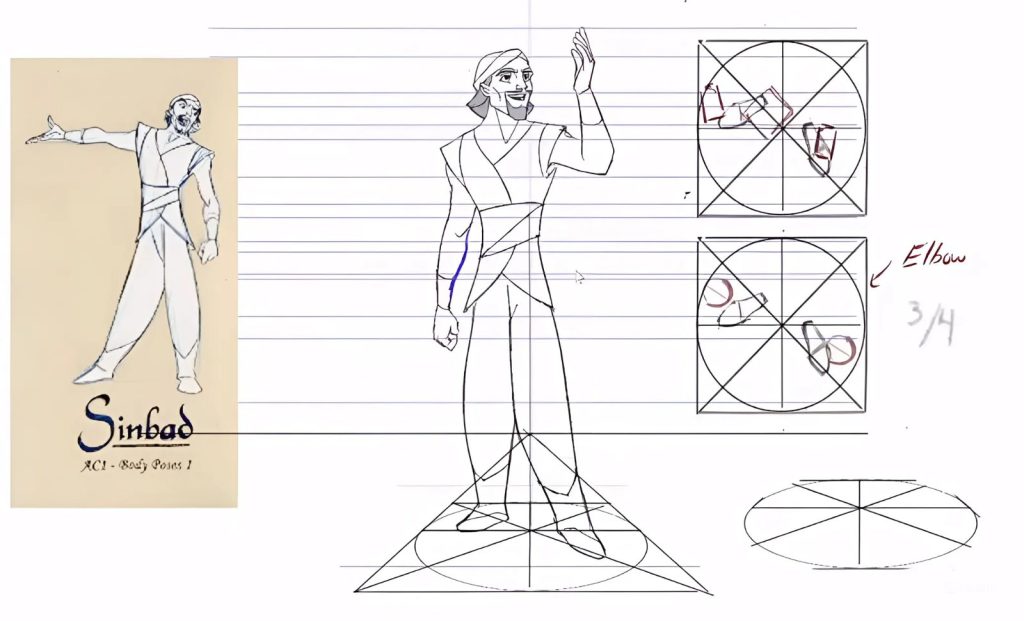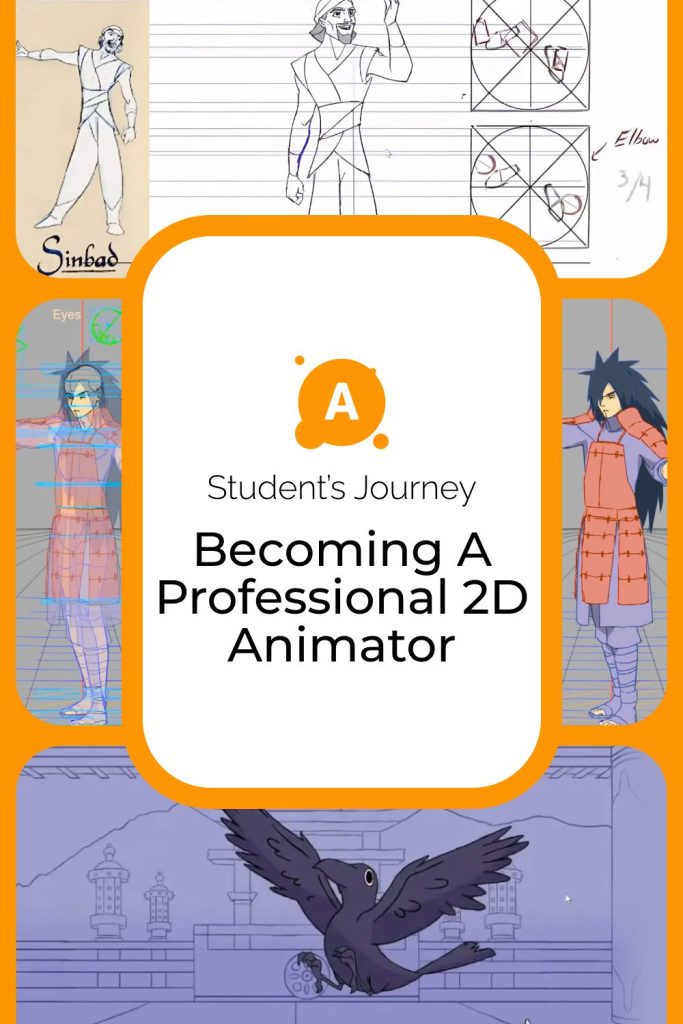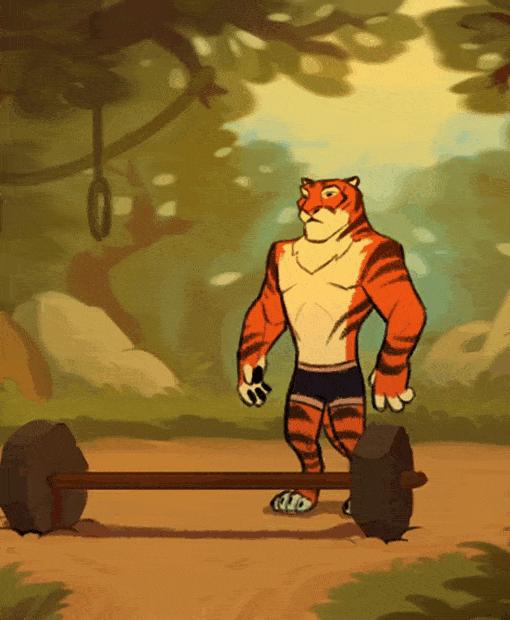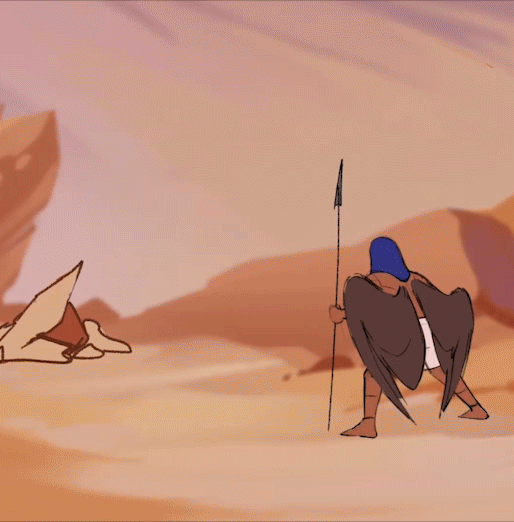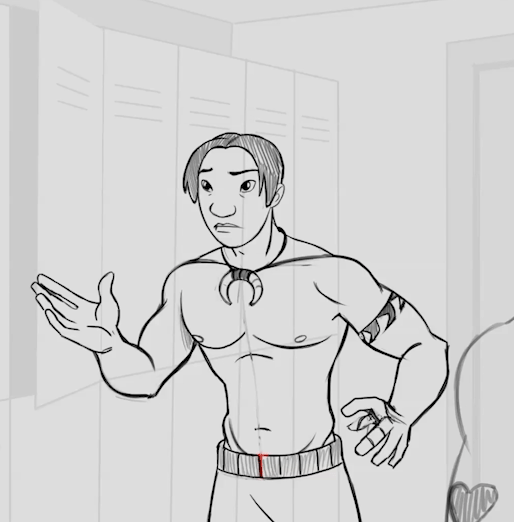How to Become a 2D Animator
In the world of 2D animation, both individual effort and the support of experienced mentors play key roles. Animation Club School mentor Edward Kurczewsky helps students not only learn the basics but also deepen their skills by applying techniques honed at leading animation studios. With over seven years of both teaching and professional animation experience, Edward shares valuable knowledge he gained at the Polish Film School and Gobelins. In this article, we’ll dive into our animation basics course, showcase student work, and discuss the class experience and feedback process. Despite its title, «Basics», this course is actually quite in-depth and challenging, as you’ll see.
Feedback on Student Work
Jumping pillow exercise
Consider the work of our new students. For example, here is Dania’s project – the first version of the second month’s assignment.
In the first month, students learned the 12 basic principles of animation, including bouncing a ball, overlapping action, pendulum motion, bouncing a bag, and more. Now, they are moving on to more complex tasks. This exercise involves a pillow kick, after which the character transforms and performs a 360-degree rotation in the air.
The task is aimed at developing skills in working with rhythm – a combination of slow and fast movements. For example, there is a slow buildup before a strike (slow), then the strike itself (fast), followed by transformation and movement in arcs. Even in the first version, the work already looks impressive, although this is just a draft without the mentor’s comments. Next, Dania will incorporate the provided feedback.
The main points that Edward noted are:
1. Improving the frame-to-frame transition when the bird exits the window – in one frame, it’s already outside, while in another, it’s still inside, which breaks continuity.

2. Improving the frame-to-frame transition when the bird exits the window – in one frame, it’s already outside, while in another, it’s still inside, which breaks continuity.
3. Refining the arcs of the pillow’s movement to follow a correct trajectory.

4. Remembering the importance of perspective – it determines how objects are perceived and move.

5. Aligning any special effects in the animation with the rhythm and arcs.
This is a four-week assignment, and each week, the student gradually improves the animation, moving towards a polished final result.
How Dania’s Animation Improved
Let’s take a look at Dania’s second shot.
The rhythm has improved significantly. Reactions are now crisper, special effects are more polished, and the added slowdowns and speed-ups make the timing feel stronger. However, a few minor issues remain.
Edward first addresses the major, more obvious errors. Once these are corrected, attention can shift to smaller details. For instance, the pillow initially seemed unimportant, but after fixing other elements, it became noticeable:
1. Improving the frame-to-frame transition when the bird exits the window – in one frame, it’s already outside, while in another, it’s still inside, which breaks continuity.

2. Avoid tangents, as they disrupt the visual flow and clarity.

3. In the scene with the owl, there was too much free space, and the owl was positioned against a busy background, which made it harder to see. It would have been better if the background had been simplified to help the owl stand out.
4. Avoid having objects touch the screen edges unintentionally. If unplanned, it’s better to adjust the position. Edward adjusted the movement arc slightly, clarifying spatial motion and rotation techniques.
Let’s see what happens next – Dania’s third shot.
Dania is an example of a student who listens carefully, applies her mentor’s recommendations, takes detailed notes, and makes sure to understand each point. This is an ideal approach to working with feedback:
When Edward sees that a student is capable of producing high-quality animation, he raises the bar and suggests incorporating more complex elements. For instance, he might recommend animating the fabric tearing as the owl flies out of the pillow, or adding intricate special effects like pieces of wood flying off. Avoiding symmetry and fine-tuning details, such as how smoke interacts with the pillow, are also emphasized.
Special focus is given to the character’s poses, three-dimensionality, and perspective. Even animators with a strong foundation can always improve. This showcases how a simple task can evolve through continuous refinement.
Even when the initial animation looks solid, there’s always room for improvement. This highlights the value of external feedback and the importance of ongoing development, even for experienced animators.
Let’s Look at Her Final Animation Result.
Morphing exercise
Let’s take a look at the work of our student Leonardo, who approaches the process with serious dedication.
We’ll review the second and third versions of his shot, as well as the fifth version after Edward’s feedback. The changes in rhythm and movement are noticeable. Initially, the smoke was just a placeholder moving upward, but now it flows in the correct direction.
Additionally, the bricks in the wall now interact with the action. When the dragon lands, small pieces fall, enhancing the realism. This level of detail makes the animation more believable and visually impressive.
Let’s take a look at the Leon’s work. This is the final version, and while it might seem that he was lazy for not preparing the previous versions, the quality of this work clearly shows otherwise.
The animation of the bird is brilliantly executed, with excellent rhythm, placement, and volume. The tutor is very pleased with the result, especially considering that this is only the second month of the first course. The work was finalized and submitted for the demo two weeks after the course ended.

We presented three examples of student work, each of which underwent one of the most challenging exercises in the course. Throughout the course, students also worked on spreads, which served as a bridge between the first and second courses. In the second course, students will focus solely on animating characters, and it is important that these characters are done in a consistent style. This exercise helps them learn how to create characters that are consistent and recognizable, work with construction, and understand volume, which is essential for good animation.
Work by Dania Marez
